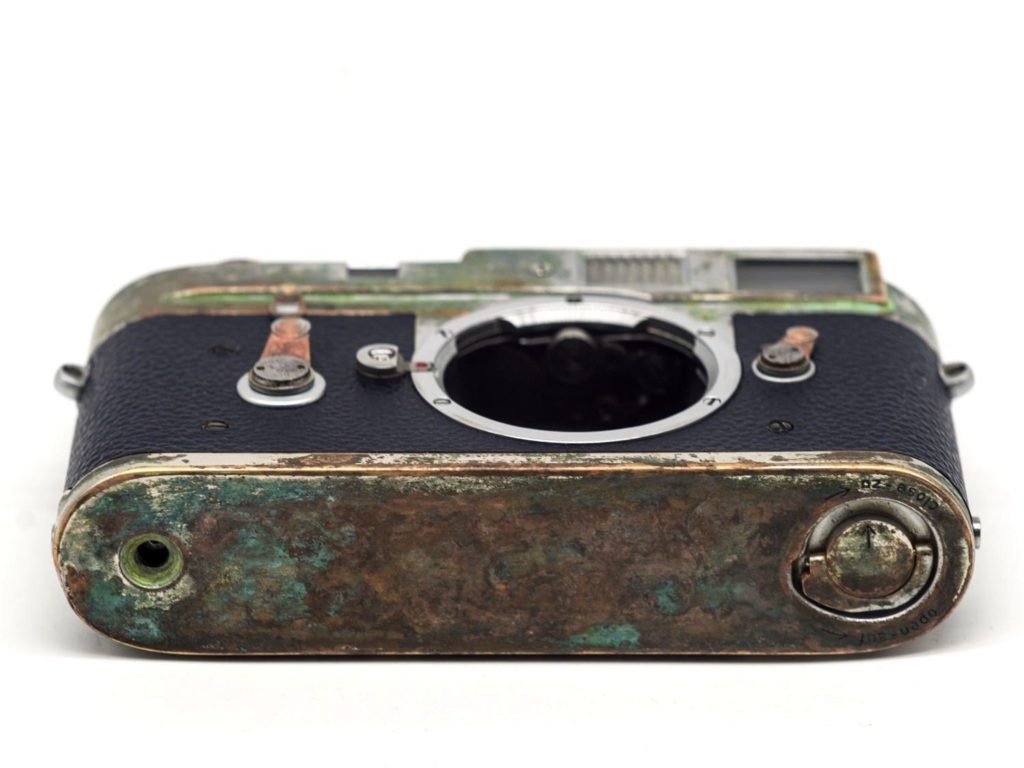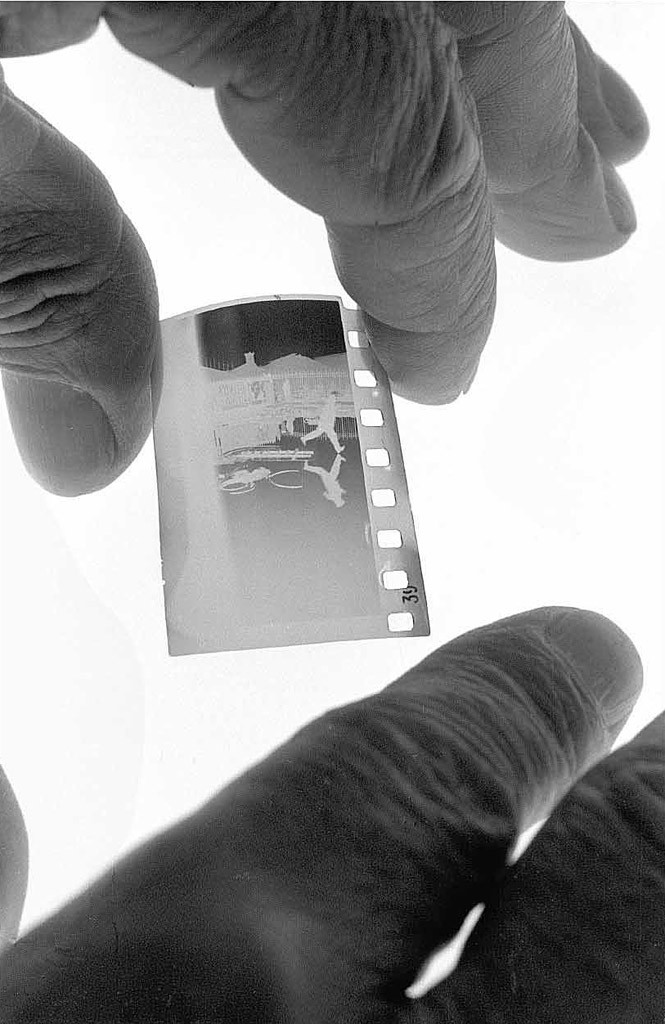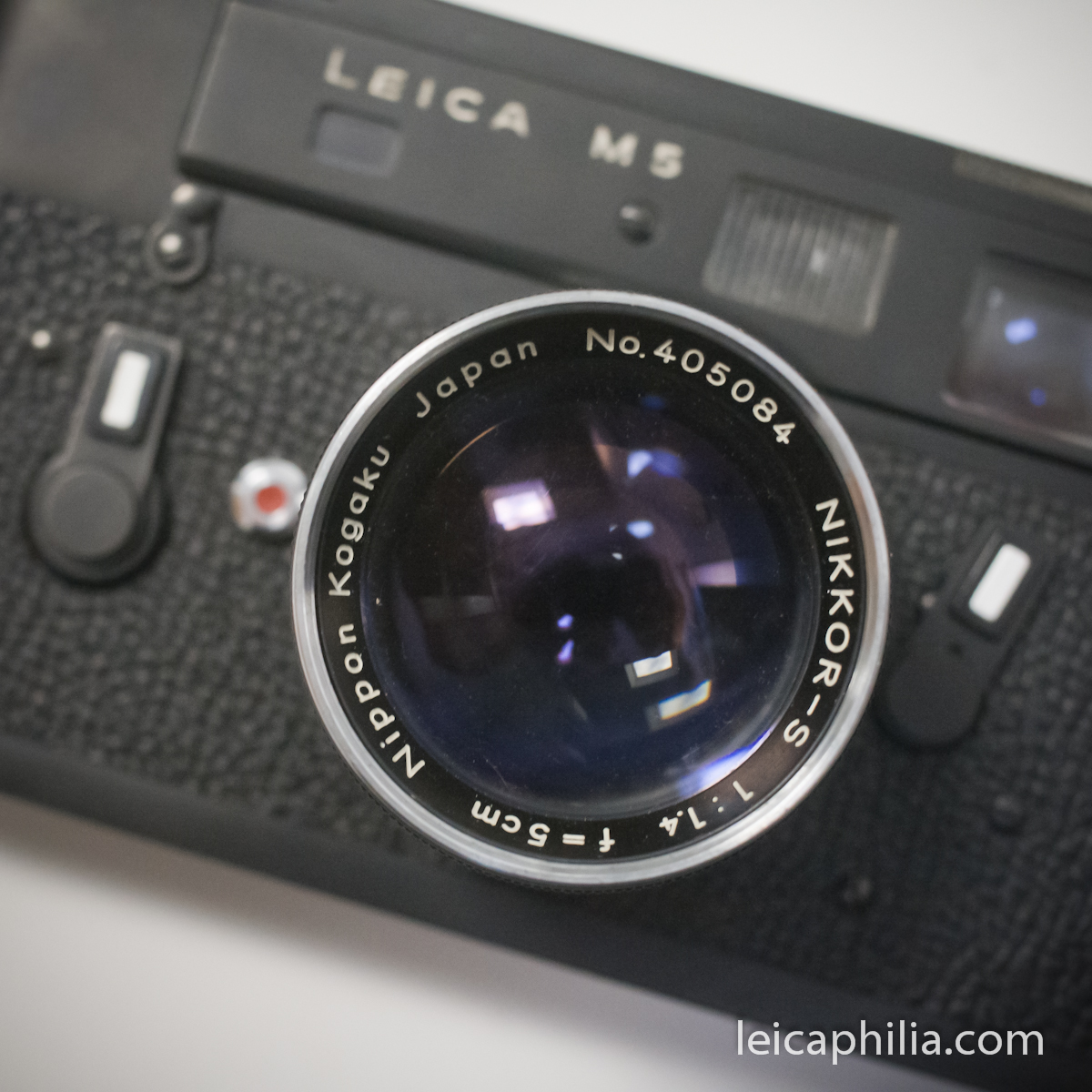Patek Philippe, maker of exquisite hand-made mechanical watches for the one-percenters, justifies their stratospherically priced goods with following advertising slogan -” You never actually own a Patek Philippe, you merely take care of it for the next generation.”
I think of this when I think of my film Leicas, which, to my mind, embody the same mechanical timelessness as does a vintage Patek, albeit at a much more forgiving price point. A Leica M3, or a Iiif, one dad bought 60 years ago, still works just fine, no obvious end in sight. Your grandkids, were they of a mind (seriously doubtful, though, in an age of instant digital communication), might easily be loading it with Tri-X (probably now manufactured by some niche film concern) and photographing their grandkids with it come 2056.
There’s something comforting about that thought, a certain continuity of tradition that’s been almost wholly swallowed up by digital technologies. Traditional silver halide photography – film photography and wet printing – has become a niche within a niche, having been, within the last 15 years, completely bludgeoned on two major fronts: Communication is now digital, and the immediacy of the internet, WiFi and iPhones have caused a complete consumer embrace of digital.
Call me completely clueless, but I’m happy to chug along enjoying the pleasures of what I think of as “photography,” loading film into cameras, controlling what my camera does (as opposed to my camera controlling what I do) via shutter speed, aperture, metering and choice of film. And choice of development. It seems to me that I’m practicing a wholly different craft than the one most “photographers” practice today.
*************
I’ve recently embarked on an epic quest to digitize every negative I’ve ever shot since 1970. It’s my one concession to the digital age; like many of us otherwise tried and true film photographers, I’ve succumbed to the inevitability and ease of digital printing as an acceptable hybrid solution to the continued use of film.
To do so, however, requires serious dedication, because the process of scanning negatives with a consumer grade scanner is incredibly time-consuming and monotonous. My Plustek scanner, a nice little piece of equipment, takes about 3 minutes to scan a 35mm negative to approximately 30 mpx. Given I’ve accumulated over 300,000 negatives since 1970, all nicely sleeved and sitting in orderly binders, I figure that if I dedicate 8 hours a day, every day of the week going forward, I should be finished when I’m past 120 (not theoretically impossible as I’m a remarkably youthful 57 as we speak).
 Me, a very long time ago
Me, a very long time ago
Of course, such unfortunate realities push many of us over to digital capture, where we can shoot to our heart’s content and fill hard drives full of 36 mpx RAW files at the mere push of a button. What’s not to like, right?
I’m sorry, but the whole digital process simply doesn’t do it for me. Somewhere, deep in the recesses of my being, probably encoded in some archaic section of my lizard brain, is the idea of photography as a craft that produces tangible things via tangible processes. Photography needs to smell like fixer. It needs to afford you the opportunity of choosing a film and developer, of hanging a roll of film to dry, of contact sheets.
But it’s not just the process, but the result as well. Currently working now with reams of negatives from the 70’s, I’m constantly struck by the difference in the aesthetic quality of my film photos when viewed with an eye now acclimated by the digital aesthetic. Film looks different. It has an unmistakable fullness and perfect imperfection that’s been swallowed whole by the sterile perfections of digital. Run your Monochrom files all you want through Silver Efex 2, tweak those sliders all you want, add an overlay of faux Tri-X grain, and it still looks, well…like digital. It will never look like a well-exposed film negative, no matter how many S curves and grain emulations you apply. Might it be a sufficient substitute for an unsophisticated digiphile? Probably, but anyone who has spent any time shooting and developing film can notice the difference immediately, and it’s not a marginal difference, but a subtle yet profound aesthetic difference that really matters to how your photos transcribe a subject.
So, some of us, the hard-core holdouts, have been experimenting with ways to make scanning faster and more efficient so that we can continue to use film cameras as viable working instruments and not merely objects to fondle. To that end, I’ve employed an unusual scanning solution that’s completely transformed my ability to shoot lots of film without becoming back-logged and overrun with undeveloped, unprinted film photos.
*************
A year or so ago I purchased a Pakon scanner on Ebay. In the early 2000’s Pakon made film scanners for retailers who developed film. The scanners themselves were professional grade, able to quickly analyze, correctly expose and scan uncut rolls of film in 2-3 minutes and give you 6mpx tiffs. In the last few years they’ve been showing up on Ebay in good numbers, the result, as I understand it, of a national chain that got out of the film processing business and sold off their scanners. I grabbed one before they became well-known, really cheaply.
 Somewhere in New Jersey, 1976
Somewhere in New Jersey, 1976
The Pakon F135 Plus is a really well put together machine. It gives better scans out of the box than any other non-drum scanner I’ve used. It’s fast, efficient and makes scanning almost effortless. I say almost, because, as always, the devil is in the details. These Pakons are orphaned, no longer supported or serviced. They operate with proprietary software that runs on Windows XP computers, XP being outdated now by at least a decade. In order to run one, then, you’ve got to find an old computer with XP on it and use it as a dedicated scanning computer, and then you’ve got to jimmy-rig the software to run on a PC; either that, or figure out some way to run XP as a virtual machine on a current computer, which, I’m told, is a complete pain-in-the-ass.
So I’ve bought the best XP laptop I could find and use it to power my Pakon. The next problem is constantly transferring the reams of resulting tiff files from the laptop to my editing computer for editing and storage. To deal with that issue, I had a software guy design a ‘push’ program that automatically pushes the resulting tiffs from my laptop to my editing computer via a network cable. Now scanning in bulk is super-easy: develop rolls of film in batches of eight in a large Patterson tank, let dry, run the uncut rolls through the Pakon, load em into Lightroom, and voila, you now have 8 36 exposure rolls of film, fully scanned and loaded into your editing software, 30 minutes max. As for archived negatives that are cut and sleeved, remove em from their sleeves, hand feed them into the Pakon in strips of 5 or 6 and the Pakon processes them quick and easy and sends them over to Lightroom, no fuss.
Needless to say, this has re-invigorated the use of my film cameras, not just as objects to fondle, but as photographic tools. Unless it’s something quick and easy – and throwaway – I almost never reach for a digital camera anymore.
*************
Which is really cool, because it allows me to actually get my film photography out there, in people’s hands, or more usually, in front of people’s eyeballs via digital media. Usually these ‘people’ are born and bred digiphiles, having known nothing else, who consider my attachment to film cameras as evidence of incipient senility. You know, the old clueless guy who thinks he’s hip but is really just embarrassing himself. (It doesn’t help that I’m still rocking a ponytail, wearing camouflage shorts and expounding the brilliance of Dylan’s Highway 61 Revisited to kids in their 20’s). Tsk. Tsk. But, the problem in convincing them otherwise is this: they rarely get to see my film photos, given the labor intensive means of producing them. There’s been a running joke in my circle of friends for years: don’t worry about him and his ever-present camera taking pictures of you at the most inopportune times; you’ll never see em – “he’s shooting film!” Laughter all around.
Not anymore.
 Christina in Paris
Christina in Paris
I recently had the honor of transporting my niece Christina, a fine young lady who lives in the nether regions of USA flyover country, to the UK for a semester abroad. Being 20 y/o, and never having been out of the States, a chaperone was needed, at least to get her there in one piece. I was nominated. We first went to Paris to visit friends. I took only a film camera – a Hexar RF and a bag of HP5 – which I used to chronicle her trip for posterity. [As an aside, this put to bed any notion that x-ray machines will fog your film. Between a connecting flight in the States, then to Iceland, Iceland to Paris, Eurostar from Paris to London, then everything back again, my bag full of HP5 must have gone through at least 8 full scans during the trip. No fog.] Upon return home, I developed about 20 rolls, scanned them quick and sent out some shots via an extended email to update family and friends about her trip. The responses were interesting. Almost to a person, they noted how ‘cool’ these simple b&w photos looked. Nothing like what they got with their iPhones. “How do you do that?” was a typical reply. Easy. Learn how to be a real photographer and shoot film.
 Somewhere in the UK, 2016. HP5@800 in Diafine.
Somewhere in the UK, 2016. HP5@800 in Diafine.
*************
Film is not dead. It doesn’t need to die unless we let it, and that, to my mind, would be tragic in a very real sense. An entire expressive medium and unique aesthetic gone the way of the mechanical watch in the interests of the quick and easy. It’s our choice as people dedicated to the craft – Leica M6 or iPhone, Patek Philippe or Apple watch?
The problem going forward,as I see it, is the failure of the market to offer us film users a viable means of efficiently digitizing our negatives. Progress on this front was never paid attention to as all R&D efforts went to the emerging competitive digital camera market. Film technology available to the consumer simply stopped developing around 2004. No one solved the film to image, or film to digital post processing issue. Granted, some revel in the old post-processing ways as a “slow boat to China” method of enjoying photography … which makes it a shrinking market unsupportive of any manufacturing advancements that would attract new users in great enough numbers.
What we film users need is a good scanner, a scanner that can efficiently scan negatives in bulk, and quickly. Something like the Pakon (see, it can be done), but updated with software and features to run it on today’s computers and to couple it quickly and easily to post-processing software. It seems to me that this is right in Leica’s wheelhouse. It would offer us film users a practical solution for using our film cameras as viable tools instead of as sentimental throwbacks. It would compliment the sale of new Leica film cameras. It would be incredibly seductive to the hipster crowd in Austin and Brooklyn, Paris and Beijing, not to mention us old dudes. It might just save film photography as a viable photographic option going forward. If Leica can find the time to build something as funky as an M262 digital camera without LCD, surely they can build us film Leicaphiles a decent bulk scanner. Are you listening, Leica?

 Jimmy Page and Bob Dylan, photos by Jim Marshall
Jimmy Page and Bob Dylan, photos by Jim Marshall





















































